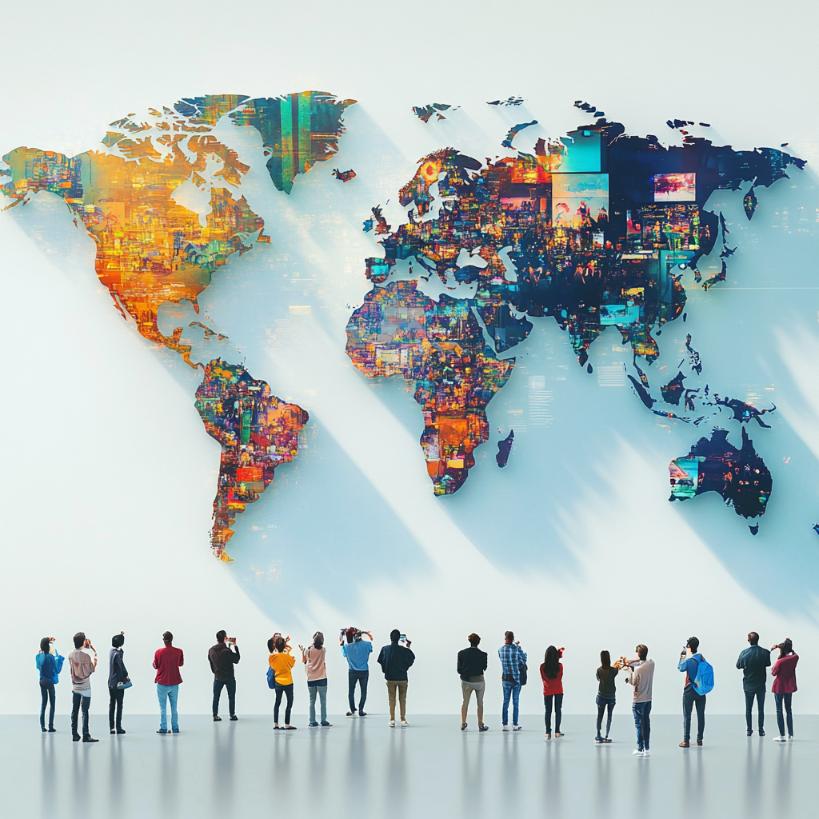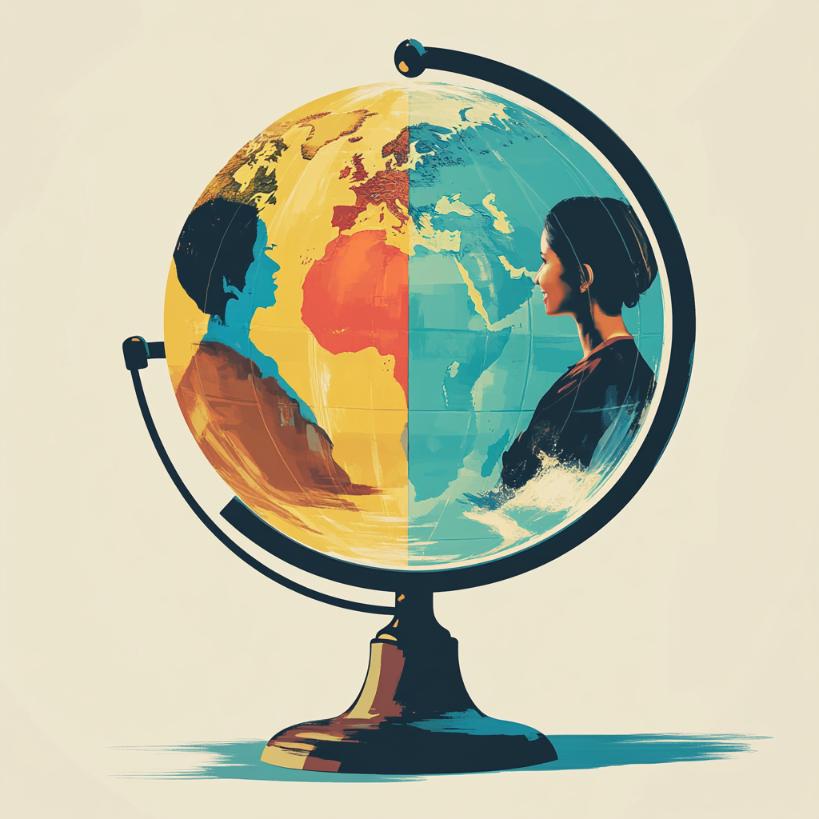Localized Video: How to Create Culturally Relevant Content for Global Audiences
Introduction
A localized video is any video content that has been adapted to meet the language, cultural, and social norms of a specific region or audience. This process goes beyond simple translation, involving the modification of visuals, idiomatic expressions, references, and even humor to align with the expectations of a particular culture. For content creators looking to expand their reach into global markets, localization is essential for making content feel relatable, authentic, and engaging to diverse audiences.
As digital platforms continue to expand globally, the need for culturally adapted content has grown dramatically. Audiences today are more diverse than ever, with viewers from different countries, languages, and cultural backgrounds consuming content across YouTube, TikTok, Instagram, and other social media platforms. While English might be the dominant language for much online content, the majority of internet users prefer to engage with content in their native language. This shift highlights the importance of localized videos that are tailored not just to the language but to the values, beliefs, and norms of specific regions.
Video localization helps creators connect more deeply with viewers by making content culturally relevant. When viewers feel that a video speaks to them in a way that aligns with their local experiences, they are more likely to engage with it—whether through likes, shares, or comments. Additionally, a localized video improves brand credibility by showing that the creator or brand values and understands the nuances of different cultures. This can lead to increased loyalty and trust among global audiences, making video localization a powerful tool for creators who aim to build a lasting and meaningful international presence.
The Importance of Localized Video for Content Creators
Cultural Relevance
Localized video is essential for ensuring that content resonates with audiences across different regions by tailoring it to fit their cultural norms, language, and preferences. Every culture has its own unique way of interpreting language, imagery, and social cues, and what works for one audience may not necessarily work for another. Localizing content allows creators to adapt these elements to align with the customs and expectations of a specific region. For example, a joke or reference that makes sense in one country might be confusing or even inappropriate in another. By modifying these aspects to reflect local tastes and values, content creators can make their videos more engaging and culturally relevant to a broader range of viewers.
Building Trust with International Audiences
Localization plays a critical role in building trust with international audiences. When viewers see that a creator has taken the time to adapt their content to the local language and culture, they feel valued and understood. This level of cultural sensitivity helps establish a stronger connection with the audience, which is key to fostering loyalty and long-term engagement. Content that ignores cultural nuances can come across as impersonal or out of touch, potentially alienating viewers. However, when creators demonstrate an awareness and respect for cultural differences, it shows a commitment to inclusivity, which can enhance their reputation and credibility on a global scale.
Improved User Experience
Localization significantly improves the user experience by making content more relatable and easier to understand for viewers. Videos that are adapted to the audience’s native language, combined with visuals and references that reflect their daily lives, create a seamless and immersive viewing experience. Whether it’s subtitles, dubbing, or modifying visuals to suit the cultural context, localization helps remove barriers that might otherwise prevent audiences from fully engaging with the content. When viewers feel comfortable and included, they are more likely to stay engaged, watch for longer periods, and share the content with others. This improved experience not only boosts audience satisfaction but also helps increase retention and growth, ultimately making a localized video is a powerful tool for creators aiming to expand their global footprint.
Key Elements of Video Localization
Language Translation
The first and most crucial step in video localization is language translation. This involves adapting the script, subtitles, or captions into the target language to ensure the message is understood by a wider audience. While machine translation tools like Google Translate can provide a basic level of translation, they often fail to capture the nuances and context of a creator’s message. Professional translators are essential for ensuring that the meaning, tone, and intent of the video remain intact across languages. In addition to translating the spoken dialogue or text, creators should focus on translating on-screen graphics, titles, and any other text that appears in the video. By accurately adapting the language, creators can ensure their content is accessible and engaging for audiences in different regions.
Cultural Adaptation
Beyond just language, cultural adaptation is a key component of video localization. It involves adjusting the imagery, symbols, and references within a video to align with the cultural norms and values of the target audience. For instance, holidays, gestures, or humor that are common in one culture might not resonate—or could even be misinterpreted—in another. To avoid alienating viewers or causing confusion, it’s important to adapt these cultural elements to fit local expectations. This could include changing jokes, references to local events or personalities, or even reworking the storyline to better reflect the lifestyle of the target audience. Cultural adaptation ensures that the video feels familiar and relevant to the audience, which can lead to higher engagement and a stronger connection with the content.
Localization of Visual Elements
In addition to cultural references, creators often need to adjust visual elements to fit the expectations of their target audience. This could include changing colors, symbols, or certain scenes to better reflect local preferences or customs. For example, certain colors may have positive connotations in one culture but negative ones in another, and imagery that works in one region may need to be replaced or modified to suit the values of another. Even details like the setting of a video or background objects can influence how the content is perceived. By localizing visual elements, creators ensure their videos look and feel appropriate for the target market, increasing relatability and comfort for the audience.
Voiceovers or Dubbing
Voiceovers or dubbing can be highly effective in creating a more immersive experience for viewers. While subtitles and captions are useful, some audiences prefer to hear content in their own language. Using native speakers or professional voice actors to record dialogue or narration can make the video sound more natural and engaging for local audiences. Voiceovers are particularly helpful for maintaining the original visual content while adapting the audio for different languages, making it a flexible option for creators. For more narrative-driven content or videos with complex emotions and nuances, dubbing—replacing the original voice track with a full translation—can help deliver a more compelling experience. The key is to ensure that the dubbed or voiced-over content feels seamless and is synchronized properly with the visuals, so the audience remains fully engaged without distractions.
Challenges in Video Localization
Ensuring Accuracy in Translation
One of the most significant challenges in video localization is ensuring accuracy in translation. Mistranslations or poorly adapted language can lead to confusion, misunderstandings, or even offend the target audience. The complexity of accurately translating content goes beyond the literal meaning of words. Translators must understand the cultural context, tone, and emotional nuances of the original message to ensure that the meaning is preserved in the target language. For instance, idiomatic expressions, humor, or colloquial phrases may not have direct equivalents in another language, requiring creative adaptation to convey the intended message. Mistranslation risks diluting the impact of the content and potentially alienating viewers, so it’s critical to use professional translators who have expertise not only in the language but also in the culture.
Budget Constraints
For content creators, especially independent ones or smaller production teams, budget constraints can pose a serious challenge in video localization. Producing localized content for multiple regions often requires hiring translators, voice actors, cultural consultants, and video editors, which can quickly add up in cost. While there are cost-effective solutions, such as machine translation and AI-driven dubbing tools, they may compromise on quality, especially for content that relies heavily on emotional connection or cultural relevance. Indie creators or smaller brands may need to prioritize certain regions or languages to localize initially, then expand as their global reach grows. Balancing quality with affordability is an ongoing challenge, but careful planning and using scalable localization solutions can help manage costs while maintaining a professional level of content adaptation.
Maintaining Brand Consistency
A key concern when localizing video content is ensuring that the brand message remains consistent across different languages and cultures. Adapting content to fit a local audience’s preferences while preserving the core values and identity of the brand can be difficult. Creators may need to modify language, visuals, or even concepts to fit cultural norms, but it’s crucial that these changes don’t dilute the original intent or alter the brand’s image. For example, global brands like Coca-Cola or Nike have successfully localized their content while keeping their messaging consistent, ensuring their brand identity remains intact no matter the region. Achieving this balance requires clear communication between creators, translators, and cultural consultants, so that the localized content reflects both the brand’s core message and the unique cultural nuances of the target market.
Best Practices for Localized Video Production
Research the Cultural Norms, Values, and Language Preferences of Your Target Audience
Before starting the localization process, it’s essential to thoroughly research the cultural norms, values, and language preferences of the target audience. Each region has unique customs and expectations when it comes to language, visuals, and even storytelling techniques. Understanding these differences can help creators avoid cultural missteps and ensure that the content resonates deeply with local audiences. For instance, what’s considered humorous or polite in one culture may not translate the same way in another. Additionally, researching language preferences allows creators to choose the right dialects or regional variations, ensuring the content is tailored to specific audiences. This initial research phase lays the foundation for producing videos that are not only engaging but also culturally appropriate.
Collaborate with Local Experts, Translators, or Consultants
To ensure that your localized video is accurate and culturally sensitive, it’s crucial to collaborate with local experts, such as translators, cultural consultants, or even local content creators. Native speakers and cultural experts can provide invaluable insights into the subtle nuances of language and culture, ensuring that the video feels authentic and relatable. These experts can help creators avoid mistranslations, adapt humor and idioms appropriately, and ensure the visual elements align with local values. Working closely with professionals who understand the local context ensures a high-quality localization process, making it easier to connect with international audiences in a meaningful way.
Use Localization Tools and Technologies
Utilizing localization tools and technologies can significantly streamline the process of adapting content for different regions. Software like Transifex, Smartling, or Amara can assist with translation management, allowing creators to handle multiple languages efficiently. AI-powered tools can also help automate some aspects of the localization process, such as subtitle generation or basic translation, speeding up the workflow and reducing costs. However, while these tools are useful, it’s important to combine them with human oversight, particularly for ensuring cultural accuracy. The right blend of technology and expert input can help create a more seamless and scalable localization process, enabling creators to focus on maintaining the quality and authenticity of their content.
Test Localized Content with Local Audiences
Before publishing, it’s essential to test localized content with local audiences to ensure that it resonates and avoids any unintended cultural missteps. This step allows creators to gather feedback on how well the language, visuals, and overall messaging align with the target audience’s expectations. Testing can be done through focus groups, pilot releases, or feedback from local influencers. By conducting this final check, creators can identify any areas that need further refinement and make adjustments before the video goes live. Testing helps ensure that the localized content not only meets technical requirements but also connects emotionally and culturally with viewers.
Conclusion
Video localization offers immense benefits for creators looking to expand their reach and engage global audiences. By adapting content to align with the language, culture, and values of different regions, creators can connect more deeply with viewers, improve engagement, and build stronger relationships across diverse markets. Localization not only enhances the relatability and impact of videos but also demonstrates a commitment to inclusivity, which can lead to increased trust and loyalty from international audiences.
For creators just beginning their localization journey, it’s best to start by localizing one or two aspects of your content, such as adding multilingual subtitles or adjusting simple cultural references. As your global audience grows, you can gradually expand your localization efforts to include more complex elements like voiceovers, dubbing, and visual adaptations. This step-by-step approach allows you to scale your content without overwhelming your resources.
To ensure that your content is professionally localized and culturally accurate, consider partnering with Mosaico Productions. Our expert team offers a range of video localization services, from translation and subtitling to full cultural adaptation, helping you create high-quality content that resonates with diverse audiences around the world. Contact us today to take your videos to the next level!




